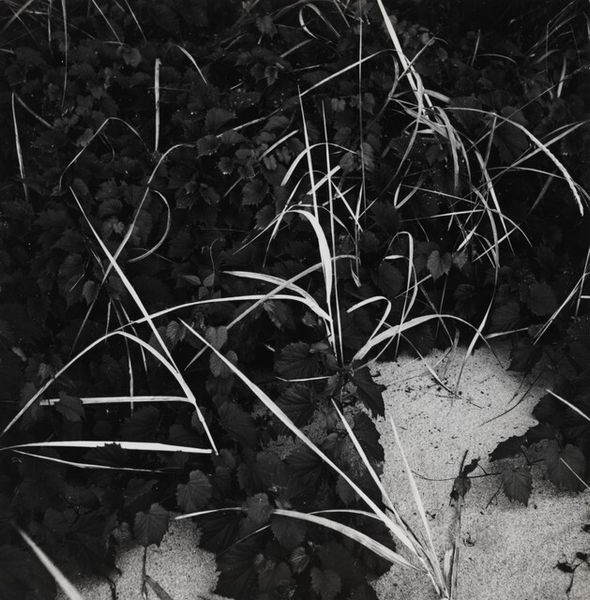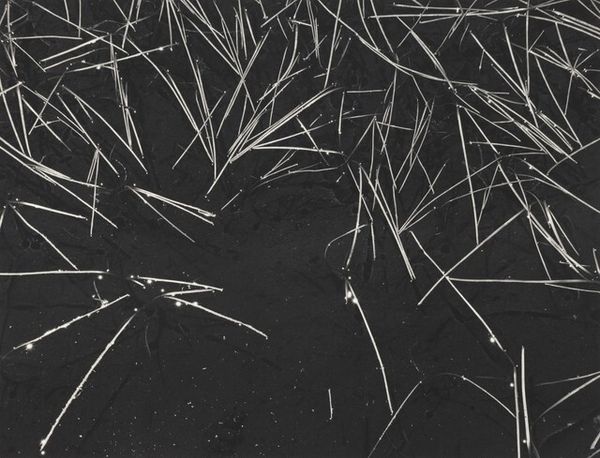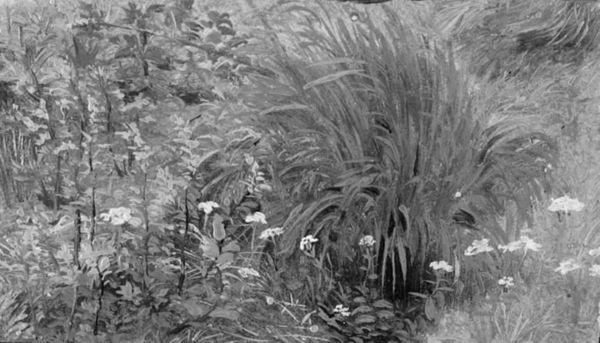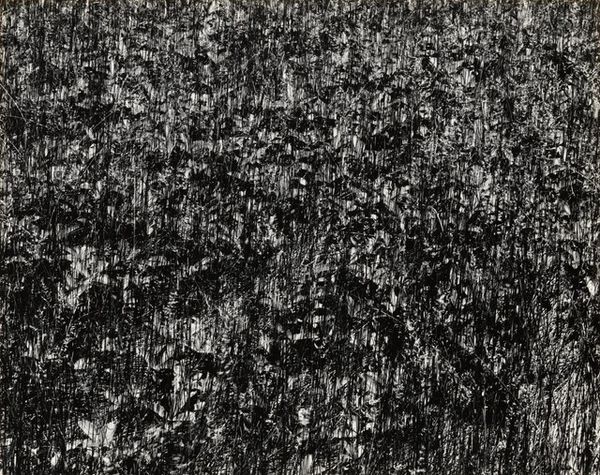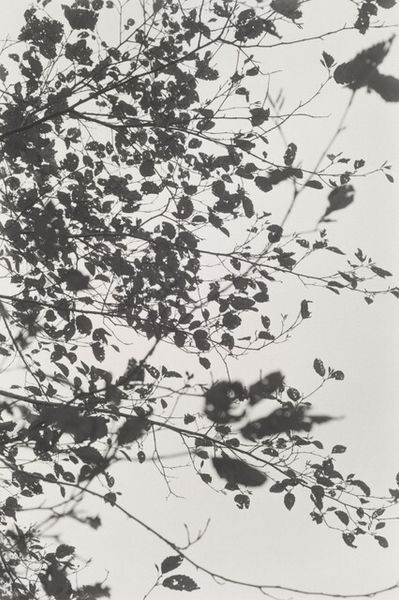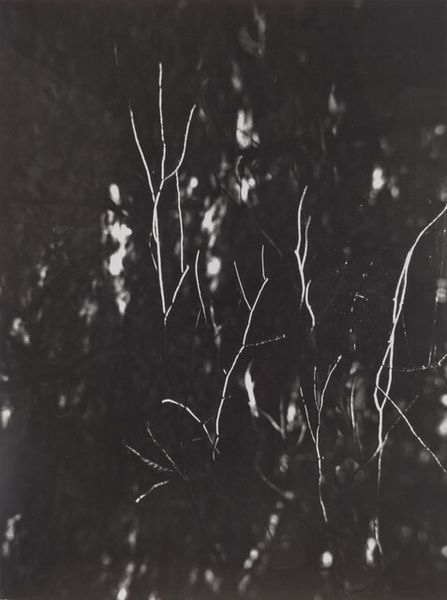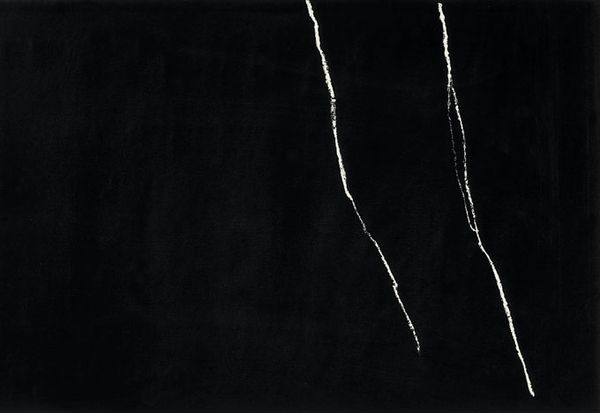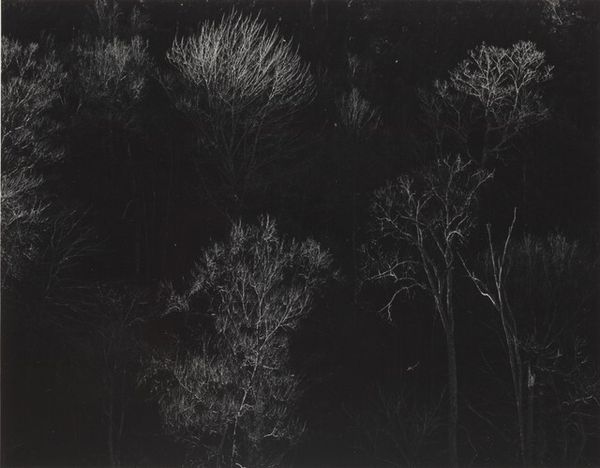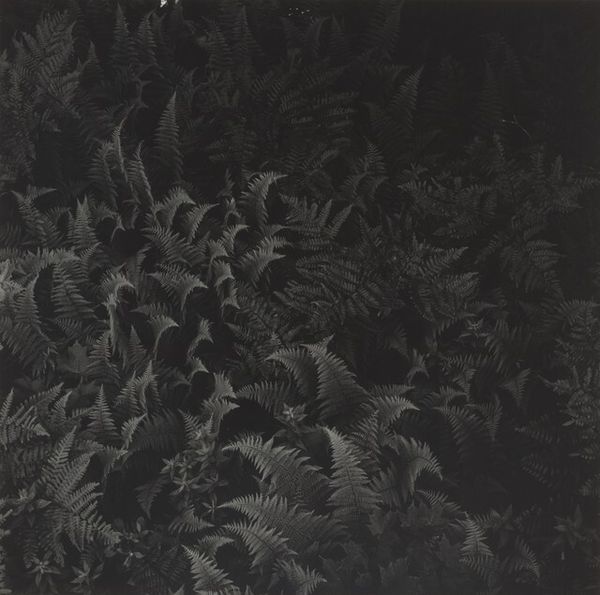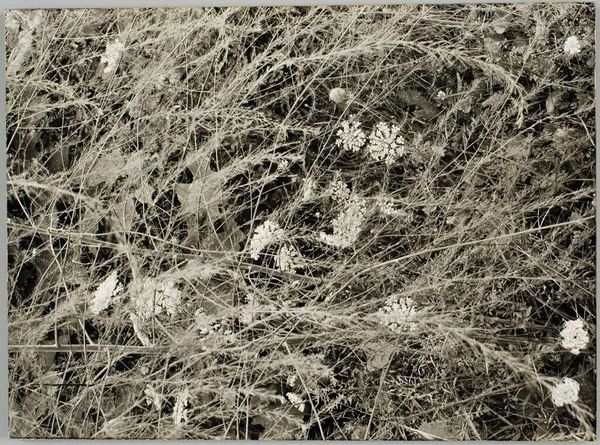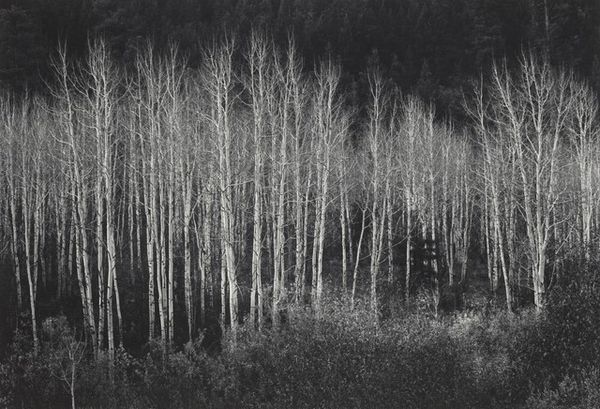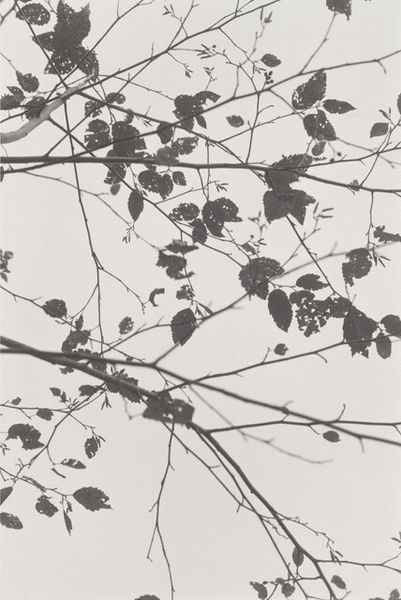
photography
#
landscape
#
nature
#
photography
#
line
#
natural texture
#
nature
#
natural form
#
realism
Dimensions: overall (image): 11 x 16.7 cm (4 5/16 x 6 9/16 in.) mount: 27.9 x 26.7 cm (11 x 10 1/2 in.)
Copyright: National Gallery of Art: CC0 1.0
Editor: This is Harry Callahan's "Grasses, Wisconsin" from 1959, a gelatin silver print. It's almost abstract, with these delicate lines of grass against a dark background. There's a sense of rhythm, but it also feels stark. How do you read this image, given the socio-political context of the late 50s? Curator: Well, considering the socio-political landscape of the late 1950s, it's interesting to view this not just as a simple landscape, but as a potential commentary on conformity. Callahan was photographing during a time of intense social pressure, and the uniformity and repetition in this field of grass could be seen as a subtle reflection of that. Do you think that’s plausible, given photography's evolving role in social documentation at the time? Editor: That’s a thought-provoking take. I hadn’t considered the grass representing conformity, I was focused on its natural beauty and how that relates to realism and the natural texture. But your point makes me consider the intent behind choosing this seemingly mundane scene. Curator: Precisely! Callahan often photographed familiar subjects - his wife, Eleanor, nature. But the "how" is critical. Here, he's isolated these blades of grass, making them stand for something more. How was realism in art perceived at the time? As objective truth, or capable of carrying subjective meaning? Editor: I suppose viewers likely regarded realism in photography as offering more objective documentation of ordinary life. Now I'm really seeing your interpretation of Callahan making a comment through an objective means of documentation, with those subtle undertones. That is super fascinating! I never looked at realism this way before. Curator: Exactly, the power of art lies often in these layered meanings. And questioning established ideas opens our eyes to a broader range of interpretation, doesn't it? Editor: Yes, thank you for that fresh look!
Comments
No comments
Be the first to comment and join the conversation on the ultimate creative platform.
